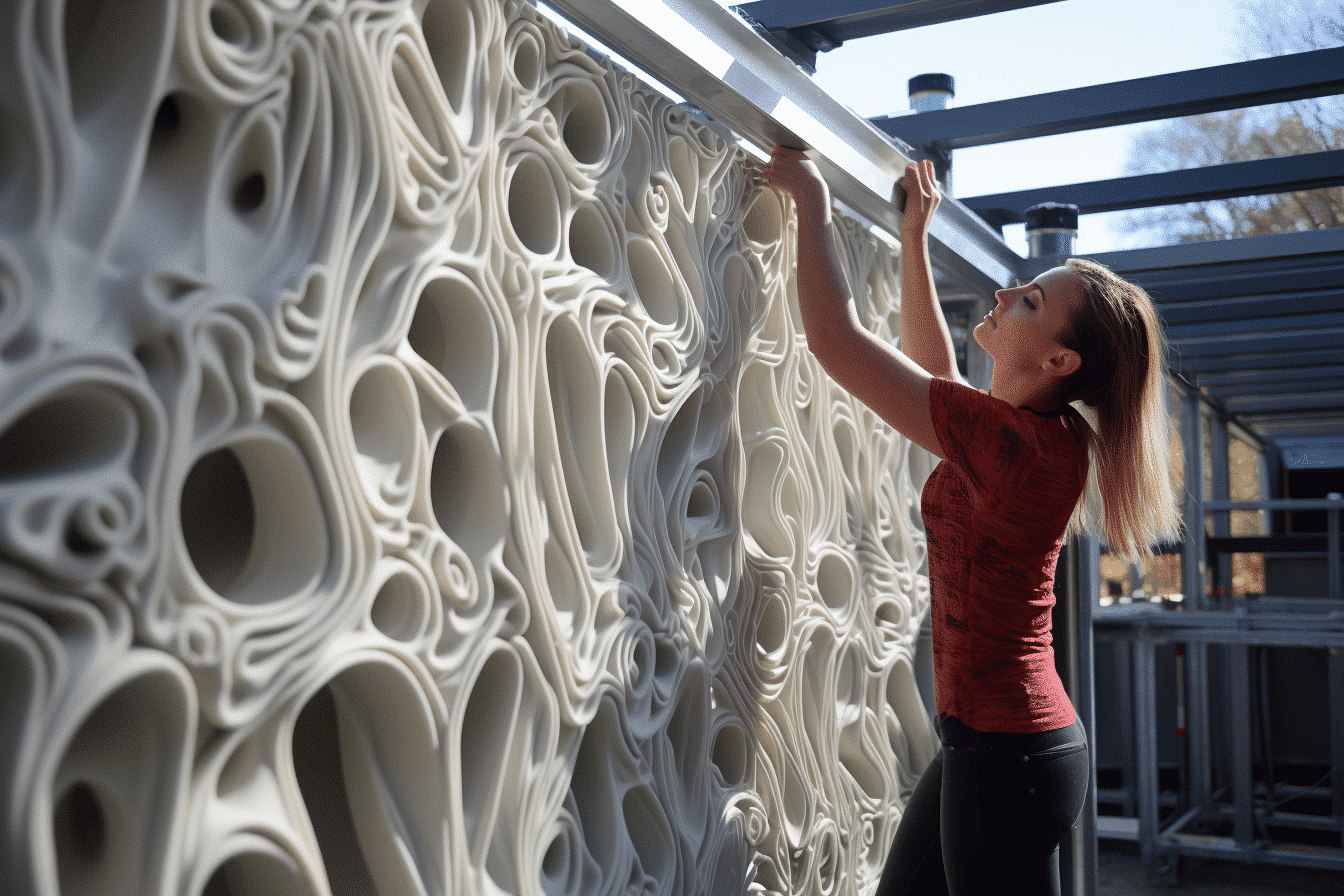In Texas, a groundbreaking neighbourhood boasts the distinction of being the globe’s most extensive collection of 3D-printed homes. This unique community recently showcased its inaugural residence.
The home, constructed with walls “printed” from a concrete blend, represents the first in a series of 100 homes slated for occupancy beginning in September.
This novel development can be found in Georgetown, Texas, under the banner of Wolf Ranch. Situated roughly 30 miles north of Austin, the state’s capital city, this venture is a joint effort between Texas’s ICON construction agency, the Lennar homebuilding entity, and the Danish architectural firm, Bjarke Ingels Group (BIG).
At the project’s launch this past Saturday, potential homeowners had the opportunity to explore the fully realized model residence. Some units have found buyers, as reported by ICON’s representative, Cara Caulkins, in a communication to CNN.
Photographs shared by the developers highlight the home’s luminous interiors and sleek, gray, curved walls. These walls are sculpted from Lavacrete and channelled into place by vast 46-foot robotic printers. Following the wall construction, other components like windows, doors, and solar-equipped roofs are fitted.
To date, over one-third of the neighbourhood’s walls have been realized. The available properties are priced between $475,000 and $599,000.
The 3D-printed residences span areas of 1,500 to 2,100 sq ft, featuring three to four bedrooms.
Innovative, Efficient, and Cost-effective
In 2021, ICON’s CEO and co-founder, Jason Ballard, dubbed the project a pivotal juncture in community development. According to him, 3D printing achieves superior-quality homes more rapidly and economically compared to traditional methods.
With the US grappling with a shortfall of nearly five million new homes, Ballard emphasized the pressing need to upscale production without sacrificing excellence, aesthetics, or ecological responsibility. He believes their technological prowess aligns precisely with this objective.
Martin Voelkle of Bjarke Ingels Group highlighted the environmental advantages of 3D-printed structures, emphasizing their contribution to waste minimization and their attributes of resilience, sustainability, and energy self-reliance.
Studies support the ecological benefits of 3D-printed homes, noting significant reductions in CO2 emissions and building waste. This method forgoes the need for concrete formwork, leading to considerable material savings. It’s noteworthy that cement accounts for nearly 8% of the annual global CO2 emissions.
A 2020 Singapore-based research discovered that a 3D-printed bathroom was about 25.4% more cost-effective and generated roughly 86% fewer carbon emissions than its traditionally-built counterpart.
However, skeptics argue that 3D-printed homes still rely on high-carbon concrete. Additionally, there’s a lack of widespread building codes to address these structures’ safety and durability concerns.
Wolf Ranch marks ICON’s most ambitious endeavour yet. Nevertheless, the company has previously leveraged 3D printing for community housing in both Mexico and Texas.
In a 2019 discussion with CNN, Ballard proposed that their innovative technology might address challenges like homelessness or offer refuge post-natural disasters.
Ballard concluded, “3D printing has transcended the realm of science fiction. It’s a tangible reality now. Our vision is for it to pave the way to housing solutions that mirror our loftiest ideals and aspirations.”
The embrace of 3D printing in residential construction underscores the industry’s trajectory towards sustainable, efficient, and innovative building methods. As Wolf Ranch stands testament to the potential of this technology, the world watches with anticipation, wondering if this could be the beginning of a new era in homebuilding. An era where architectural dreams are not constrained by traditional methodologies, and where the harmony of technology and sustainability takes center stage.

